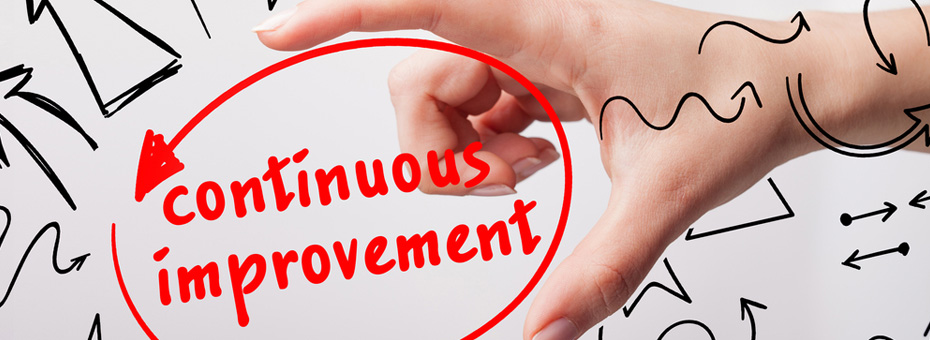Most folks think of GTS as a simple acronym for “Grasp The Situation.” This is a helpful way to think about problem solving (PDCA), because it conditions ourselves to go and see in order to effectively grasp the situation. In order to solve problems or make improvements, first we want to determine the current state and measure it against the known standard or the ideal state. The key is to measure; without a measure it’s very hard to know exactly what to improve, or whether there is improvement.
Ernie and I have found that there’s not just one, or two, but in fact six powerful GTS acronyms that we believe form the basis of we call Toyota’s “Engagement Equation” (we have a book on this topic coming out in May of this year from McGraw-Hill.) We have come up with this set of principles as a way to share a process of thinking we were taught by our trainers at Toyota that was the foundation of our cultural climate. It’s a cyclical process that steps through PDCA thinking all the way through to continuous improvement. Every step is tangible and requires an action, followed by questions and fact based answers, through go and see.
Get To Sustain (GTS5) is one of them.
Sustaining gains from kaizen thinking is one of the hardest, and certainly most misunderstood, aspects of this work. It’s misunderstood because the actual change takes place at the beginning of the journey. Sustaining the improvement requires ongoing tracking and auditing, which we can categorize as change point management, or the discipline behind true continuous improvement. Some companies would say sustaining gains is much more difficult than creating the gains in the first place.
That’s because of a pattern we often see with companies practicing lean: a challenge when trying to “normalize” lean thinking on a daily basis. In some organizations people are often excited to find how much progress they can make as they internalize the potential of the tools they are learning to use. They often achieve dramatic gains. But then…the daily work or line of sight to the KPIs yields less and less tangible new progress. The novelty of the new approach wears off, and it gets harder and harder to visualize those gains. What started with a bang gradually becomes a daily whimper, a journey with no end—and with no end to the hard work. This can often lower the morale of an organization, especially when resources are removed.
This is the crucial moment where companies generally face the choice (whether they realize it or not) between fully committing to the hard work of lean transformation—or simply experiencing it as a flavor of the month.
Look, we know just how very hard sustaining the gains from any continuous improvement work can be. In our experience at Toyota, standardization was really the key to any continuous improvement initiative we did. As Taiichi Ohno stated, “without a standard there can be no Kaizen.” So, for example, the minor and major model changes at Toyota required a micro level daily PDCA tracking system that met the macro (monthly and yearly) status in order to roll out a new model without ever stopping the line (the standard for today). The standardization behind that is the “DNA” (discipline and accountability) to know what the expectations are and having leaders constantly monitoring gap to standard. Without this thinking it would be a daunting task to sustain with the daily/monthly gains of progress needed to meet the 5-year long-term goal.
Every company that has made improvements will find their progress challenged by both external and internal factors. Markets and supplier capabilities and above all customer expectations are constantly in flux, while the basic challenge of keeping key people on board, make the notion of sustaining the gains seem more like an illusion than a daily practice. I think in our personal lives we really have high expectations of standardization and routines. For example, when we go to a grocery store we expect a high level of standardization. We like the aisles labeled, prices visible, and we get used to where things are so it lessens the amount of lead-time it takes to do our shopping. If a grocery store didn’t maintain or look at better ways to display their goods and decided to change that standard weekly or just put it out there in the middle of the floor, it would create frustration, chaos and lengthen our time shopping. When it comes to our professional or work life we don’t often see the same importance of standardization as we do for or local grocery stores. I ask folks to individually be the “model home” on everything they can influence first, so that those actions can then become the “pull” for others to want to learn more, versus a push system of learning.
We’ve found one of the best ways to GTS5—Get to Sustainability—is through the use of Key Performance Indicators (KPIs). These indicators fall into two categories: lagging and leading. Lagging indicators are results-oriented, in that they appear after the fact. Leading indicators, on the other hand, measure what is happening in a process in real time: they let us know when we are operating out of standard and provide an opportunity to respond immediately. An easy way to explain the difference in leading versus lagging indicators is to ask an organization this question. Would you rather manage your problems or have your problems manage you? If you look for leading indicators you will be able to be more predictive; if you focus on lagging indicators you will stay in reactive mode.
If you look for leading indicators you will be able to be more predictive.
So, how should you start identifying and using your leading indicators? The key is by taking a close look at your daily processes. Go to the gemba and ask your team members how their processes are going and where they might be having issues. Consider a regular “how’s your process?” (HYP) check: a daily touch-point for supervisors to go see if people are experiencing any emerging issues. This gives you the capability to engage with the process owner and develop countermeasures in real time so it doesn’t get to the next process.
And never forget that the most important element of getting to sustainability has to do with your people. As leaders your job is to develop people, and so it helps to create indicators that reveal any real-time threats to the healthy culture you need for continuous improvement. When we worked at Toyota, for example, we saw how senior managers reacted immediately to circumstances that might lead to potential morale issues. If machinery wasn’t working properly, they were as worried about worker frustration as they were about delayed production.
As leaders your job is to develop people, and so it helps to create indicators that reveal any real-time threats to the healthy culture you need for continuous improvement.
So it was common for our leaders, all the way up to the President, to walk up to a team member on the line and ask, “how’s your day going?” and then “how’s the family?” Ernie and I both remember Mr. Cho visiting our areas several times, just asking questions and offering to help in anyway possible. Our thoughts truly mattered to him and to Toyota, and that was the biggest secret of sustaining our unique culture.
Remember that Get To Sustain is really a journey that never ends. Whenever there is success based on a new countermeasure, we know that this will not survive unless we work constantly to preserve the gains that we have made and ensure we have the proper standards in place to meet the internal and external customers.
Key Concepts of Lean Management
Get a proper introduction to lean management.







